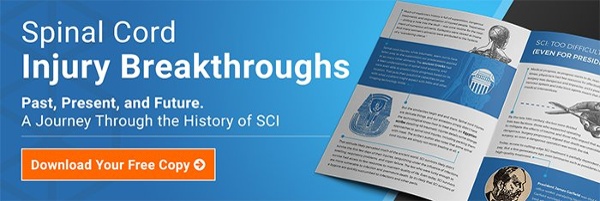Spinal Cord Injury Research Advances with New Stem Cells
At Spinal Cord, we’re excited to share that researchers at the University of California, San Diego successfully created spinal cord neural stem cells (NSCs) that “could have clinical applications in spinal cord injury and disorder treatments.”
The spinal cord injury research, conducted by postdoctoral scholar Hiromi Kumamaru and Professor of Neuroscience and Director of the UCSD Translational Neuroscience Institute Mark Tuszynski, grafted the cultured cells into the spinal cords of rats with spinal cord injuries (SCIs).
Kumamaru says about the spinal cord injury research:
“In grafts, these cells could be found throughout the spinal cord, dorsal to ventral. They promoted regeneration after spinal cord injury in adult rats, including corticospinal axons, which are extremely important in human voluntary motor function. In rats, they supported functional recovery.”
These diverse cells are derived from immature self-replicating human stem cells known as human pluripotent stem cells (hPSCs), which morph into different types of stem cells that could disperse throughout the spinal cord. According to the researchers, these pluripotent cells could serve as a scalable source of replacement cells for individuals with spinal cord injuries.
In the University’s press release, Tuszynski says that the new cells could serve as source cells for human clinical trials in three to five years. First, however, it first needs to be determined whether the cells are safe over long-time periods via studies on rodents and non-human primates — and that the results are replicable.
According to the University’s press release on the new stem cell research:
“The achievement, described in the August 6 online issue of Nature Methods, advances not only basic research like biomedical applications of in vitro disease modeling, but may constitute an improved, clinically translatable cell source for replacement strategies in spinal cord injuries and disorders.”
The hope is that the cultured spinal cord neural stem cells from this stem cell research will benefit people with other spinal cord dysfunction disorders via modeling and drug screening. According to UCSD, such disorders would include “amyotrophic lateral sclerosis, progressive muscular atrophy, hereditary spastic paraplegia and spinocerebellar ataxia, a group of genetic disorders characterized by progressive discoordination of gait, hands and eye movement.”
Although significant research has been done to explore the potential use of hPSC stem cells in creating new cells to repair diseased or damaged spinal cords, historically, progress has been slow and limited.
It is one of the goals of the Spinal Cord team to help keep you and your family informed about the newest medical advances in spinal cord injury research. We recently shared about exciting advances in gene therapy research that helped to restore hand function in rats with SCIs, as well as the use of olfactory ensheathing cells (cells from the body’s system that enables you to perceive smells) to trigger spinal cord nerve regeneration.
Please be sure to subscribe to our blog to get the latest updates on stem cell and other spinal cord injury research.
Stay Updated on Advancements On Traumatic Brain &
Spinal Cord Injuries
About the Author





